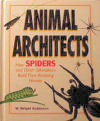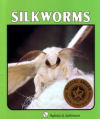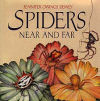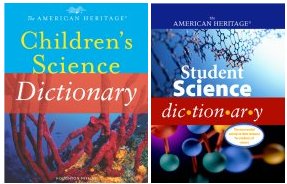A Spider’s Silky Strength Additional Information
Read about spider silk and other things related to arachnids (spiders) at www.arachnology.be/pages/Silk.html (Herman Vanuytven: Arachnology Home Page).
Learn about the field of rheology, which studies the flow of substances such as liquid silk, at www.rheology.org/sor/default.htm(Society of Rheology).
McDonagh, Sorcha. 2004. Gooey secrets of mussel power. Science News for Kids (Jan. 21). Available at http://www.sciencenewsforkids.org/articles/20040121/Note2.asp.
Sohn, Emily. 2006. Earth-friendly fabrics. Science News for Kids (Dec. 20). Available at http://www.sciencenewsforkids.org/articles/20061220/Feature1.asp.
______. 2006. Microbe superglue. Science News for Kids (May 3). Available at http://www.sciencenewsforkids.org/articles/20060503/Note2.asp.
______. 2006. Mother-of-pearl on ice. Science News for Kids (Feb. 1). Available at http://www.sciencenewsforkids.org/articles/20060201/Note3.asp.
______. 2004. Inspired by nature. Science News for Kids (Nov. 3). Available at http://www.sciencenewsforkids.org/articles/20041103/Feature1.asp.
______. 2003. Worm jaws have metal power. Science News for Kids (Aug. 6). Available at http://www.sciencenewsforkids.org/articles/20030806/Note2.asp.
Books recommended by SearchIt!Science:
 |
Animal Architects – How Spiders and Other Silkmakers Build Their Amazing Homes — W. Wright Robinson — W. Wright Robinson
Published by Blackbirch Press/Gale Group, 1999.
Watch out for spider webs! They may be hidden in the corner of a barn or basement. You often feel them before you see them. Spider webs are complex constructions, just like our own homes. So, how do spiders learn how to make them? In this book, you’ll explore these architectural wonders. It takes you from the trees to the sea, looking for the spiders’ interesting silk homes. How does a spider or caterpillar produce silk and use it to make everything from tents to traps? This book contains many photographs as well as an index and glossary. |
 |
Silkworms (Lerner Natural Science Books) — Sylvia A. Johnson — Sylvia A. Johnson
Published by Lerner Publishing, 1982.
What is a silkworm moth? How do farmers grow silkworms for making silk? Find out about domesticated silkworms in this fascinating book. Most silkworm moths live on farms in Japan; these creatures are hardly ever found in the wild. This book explains how silkworms are raised and how they reproduce. When silkworms have grown past the larva stage, their job is to feed on mulberry leaves Since domesticated silkworms can’t walk, the farmers put them on huge feeding tables covered with mulberry leaves. Full-color photographs show the silkworms eating, growing, and molting through the five instars, or periods between molts. After the fifth instar, the farmers put the silkworms on cardboard frames. Here the worms build their silky cocoons, which the farmers harvest and send to a silk factory. The cocoons of domesticated silkworms are baked to kill the pupae inside. This book, however, explains what would happen if the pupa was allowed to live and transform into a moth. A glossary and index are included. |
 |
Spiders Near and Far — Jennifer Owings Dewey — Jennifer Owings Dewey
Published by Dutton Children’s Books/Penguin Putnam, 1993.
Spiders are meat eaters, but they cannot chew. They live entirely on a liquid diet. To make their food digestible, spiders inject their prey with venom that liquefies the insides of the victim. Then, the hungry spider sucks out the fluid. In this book, artist and nature writer Jennifer Owings Dewey takes you into the spider’s world Observe how a spider stalks and kills its prey. Find out about two kinds of spiders—the web builders and the wanderers—and how they differ. Discover how spiders spin their webs, mate, and give birth. See how spiders’ bodies are uniquely suited to the way they live. Don’t forget to give credit to spiders for reducing the number of insect pests in our environment. The book has an index and two pages of life-size drawings of various spiders as well as many other illustrations. |
Power Words
cocoon A silky covering made from strands of material produced by the larva of an insect, such as a butterfly, to protect itself until it becomes an adult. Cocoons are made by an insect before becoming a pupa.
protein A molecule that is made up of long chains of chemical compounds called amino acids. Living cells are made up largely of proteins. Proteins are an important part of the diet of many animals and are found in foods like meat, cheese, and breads.
silk A strong fiber that is made by spiders and some insect larvae, especially silkworms. Spiders spin webs from silk. Silkworms are the larvae of a type of Asian moth that use silk to spin their cocoons.
synthetic Relating to a substance that has been made by scientists in a laboratory. Nylon and polyester are synthetic fabrics. Many car tires are made of synthetic rubber.
Copyright © 2002, 2003 Houghton-Mifflin Company. All rights reserved. Used with permission.
